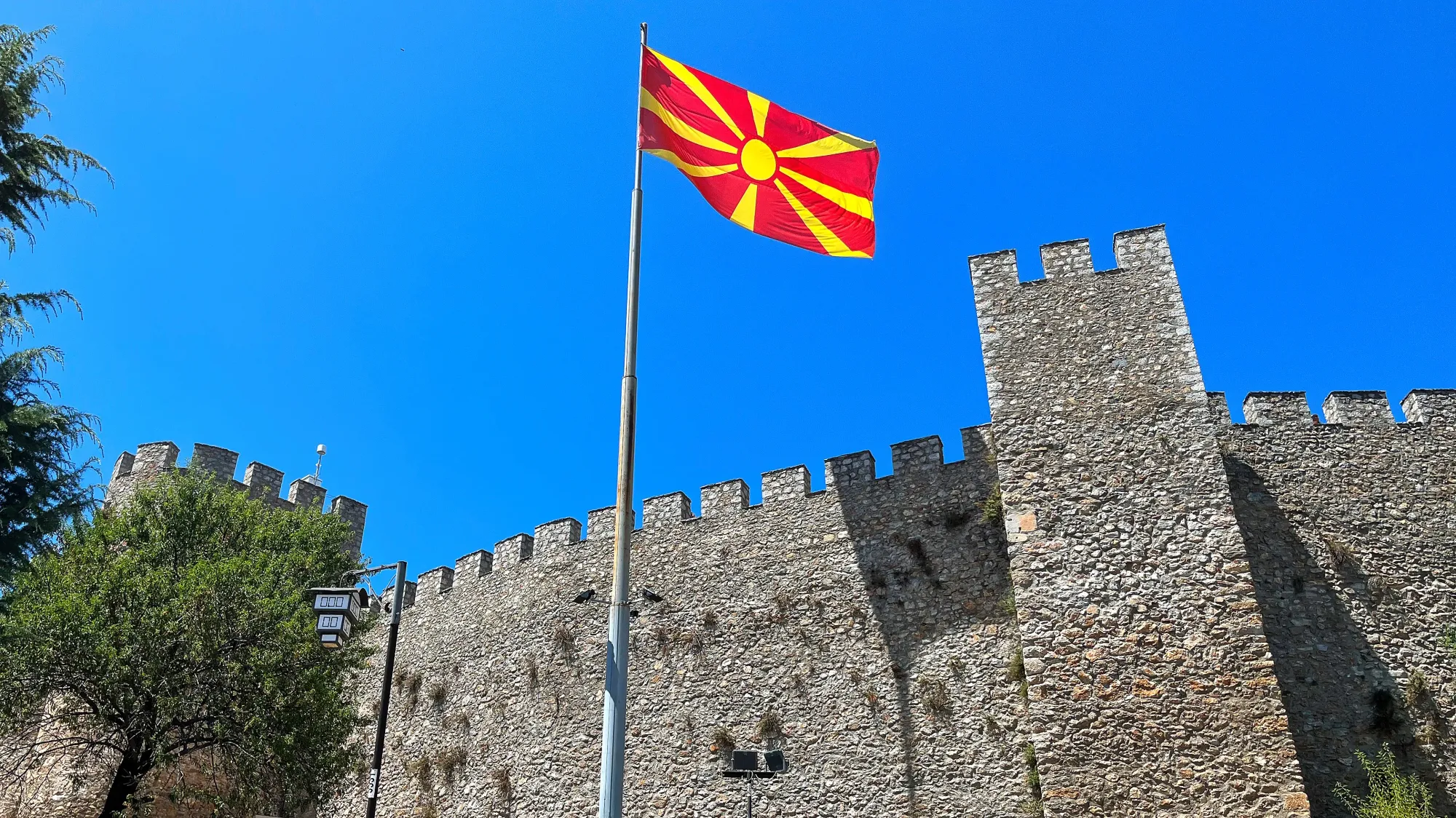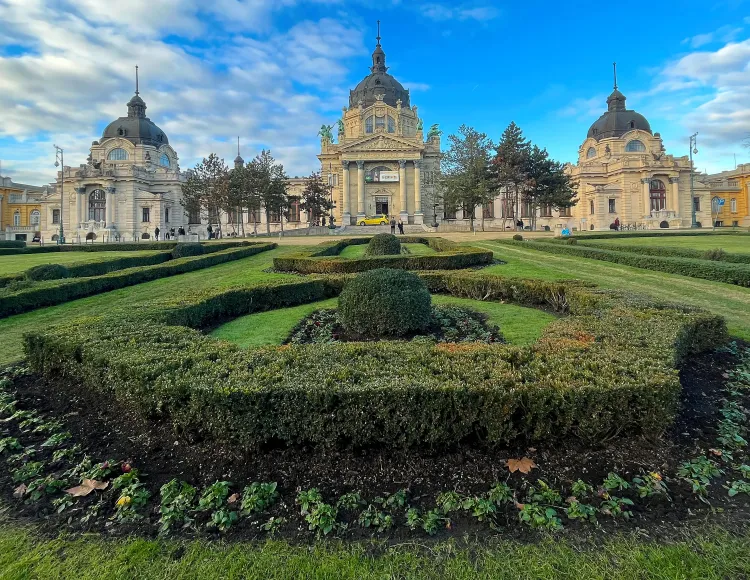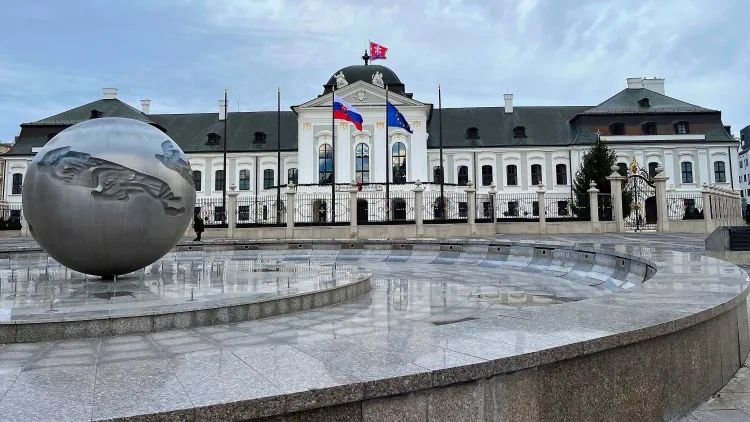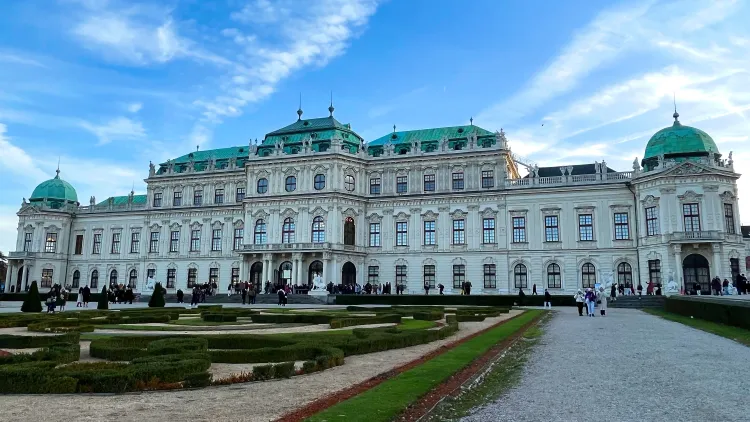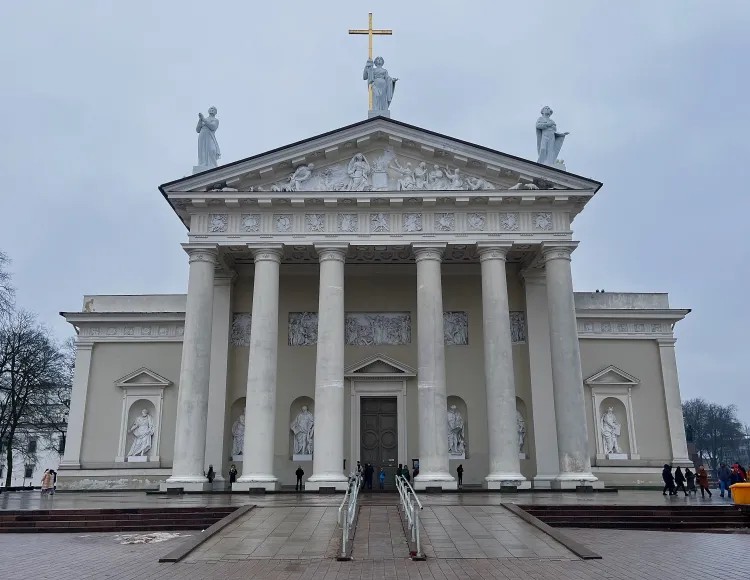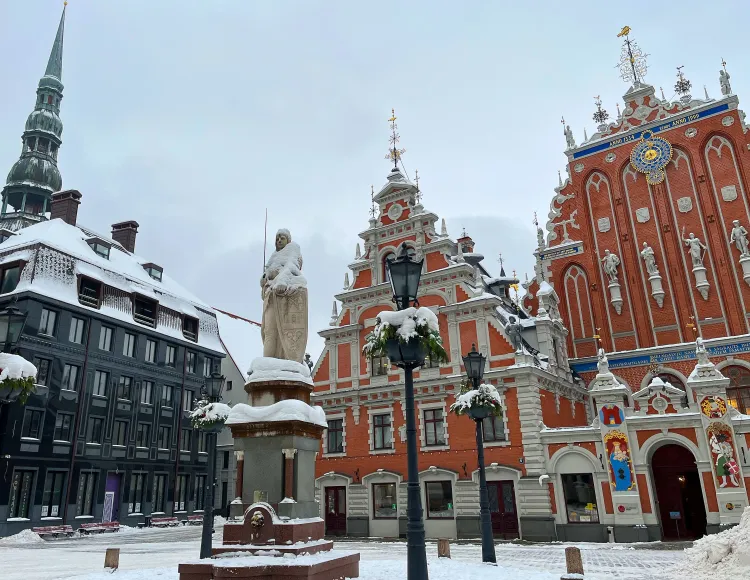Journal #29 - North Macedonia
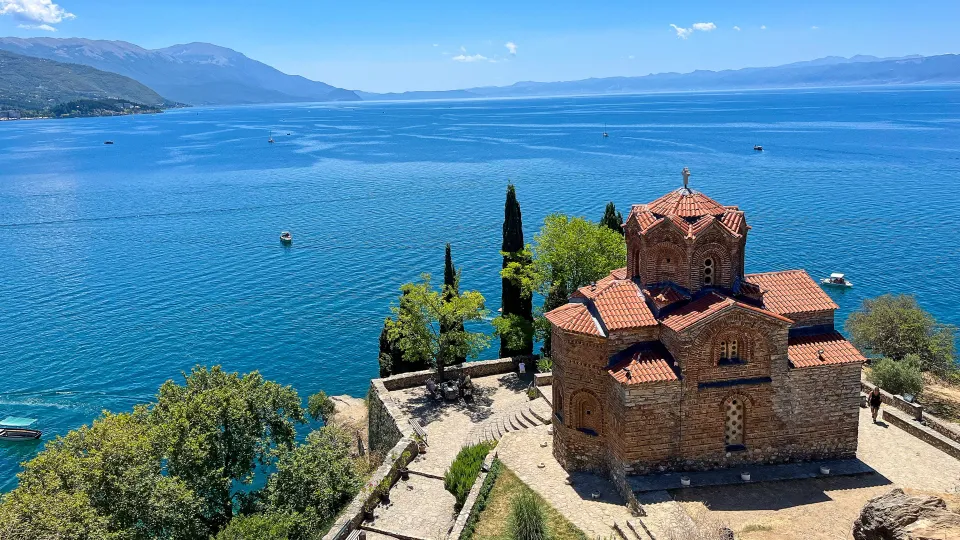
Zdravo from North Macedonia!
In preparation for our visit to North Macedonia, we spent some dedicated time trying to learn more about this nation. While it was cheeky, one source we stumbled upon characterized the nation's disagreements with each of its neighbors quite concisely. It said that each country touching North Macedonia does not recognize its church, sovereignty, borders, or name respectively. Despite all of that, the nation still stands there today. It was amusing for us to visit a country that, while having so much controversy surrounding it, was actually a peaceful place to be present.
We started off our trip in Skopje. This city is split between its old and new sections. The older part of town held many Turkish tourists and its bazaar remains standing in the style reflective of its Ottoman roots. We took advantage of mixing up our North Macedonian food intake with any number of the multitudes of Turkish sweet shops.
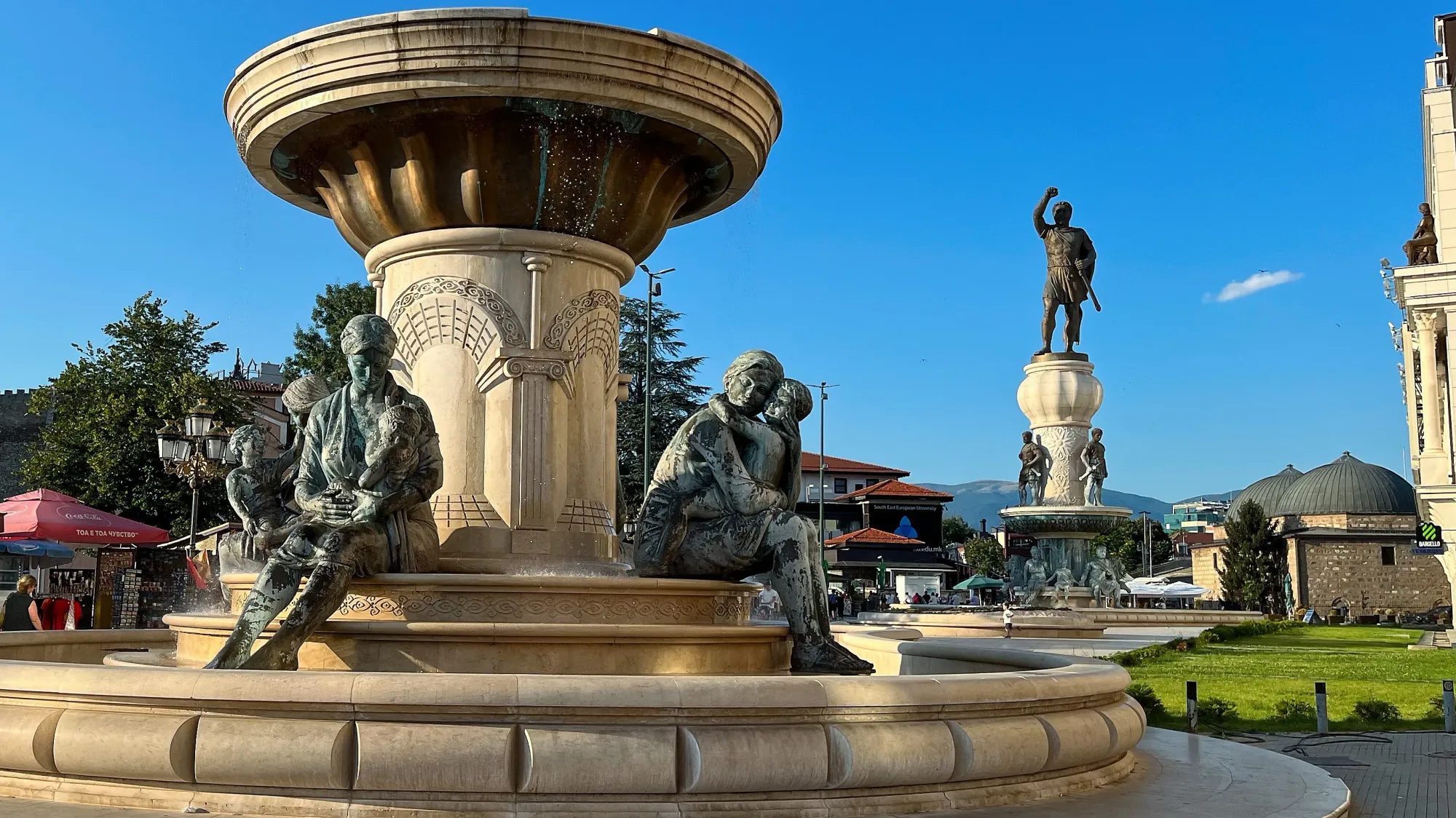
On the modern side of the city, the government has been renovating it and installing large statues in honor of North Macedonia’s idols. Famously there is a large monument in Alexander the Great’s honor along with a fountain for his mother (Olympias) and another statue of his father (Phillip II). What surprised us most about this experience was the fact that these giant patinaed statues were not in fact (as so many we have seen on this adventure of ours) hundreds of years old. Rather, these spiffy installations were put in place in 2014! The government decided that downtown needed a facelift and they provided it. It was amusing but also gave the city an air that matched the actual age of civilization here, as North Macedonia’s land is some of the longest inhabited in the world.
Moving on from Skopje, we traveled to the UNESCO World Heritage site of Lake Ohrid. Standing as one of the oldest and deepest lakes in Europe, Lake Ohrid provided a swath of entertainment for us. We enjoyed visiting the Ancient Theatre of Ohrid, which was built in 200 BC. It is set overlooking the lake, which we caught with beautiful weather. The water was a rich blue sparkling to mimic the dancing that used to be performed in that theater.
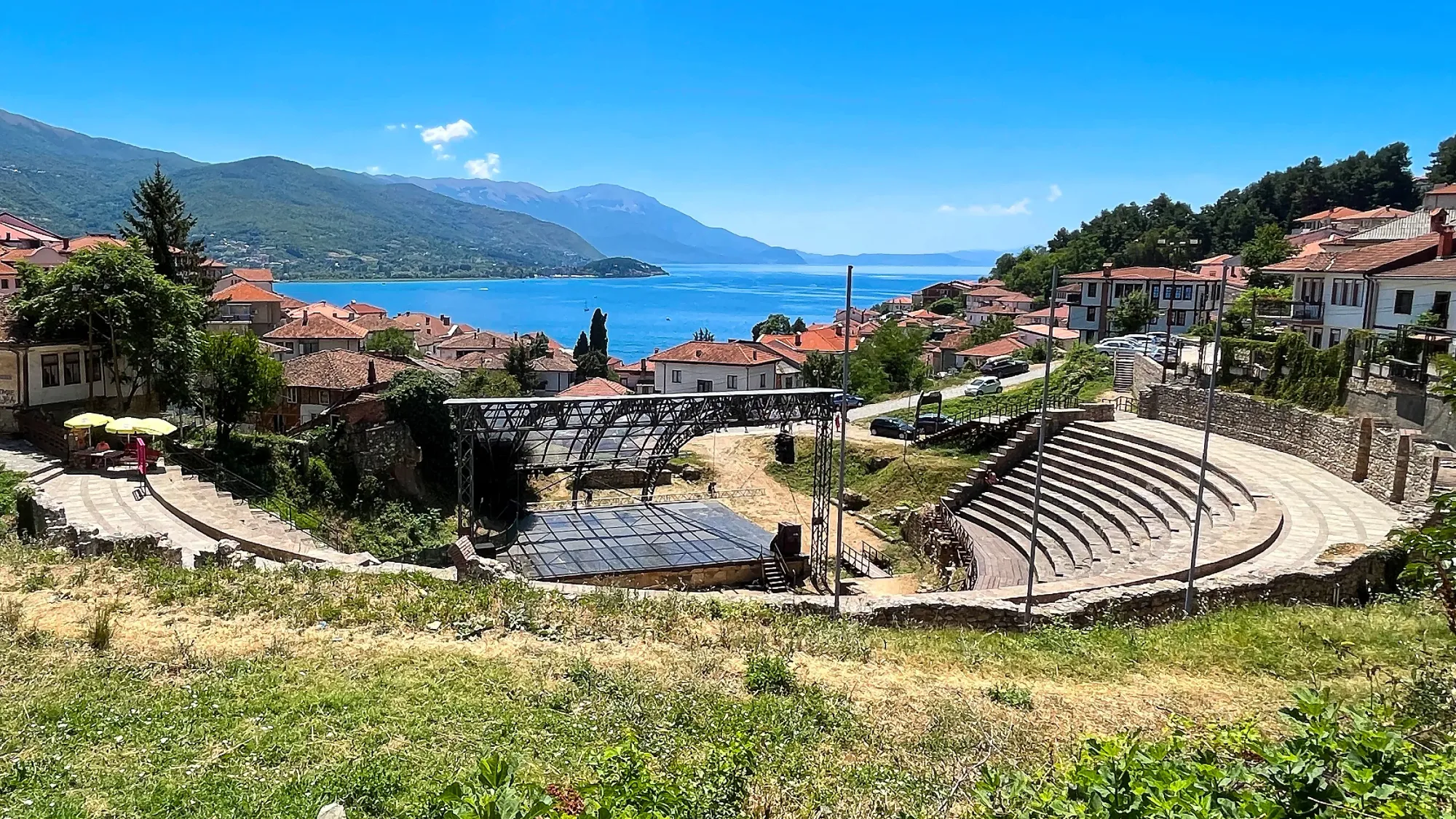
After visiting the theater, we took a leisurely hike on the side of the lake up to the church of Saint John at Kaneo. This iconic photo opportunity gave us the chance to look out over the city of Ohrid and see swimmers and boaters. We also could look across the lake to the Albanian side as well. On the walk through the woods to this scene, we passed the construction of a new university in Ohrid. Having seen the place in such glorious weather, it was hard to imagine students being productive in that environment instead of just lounging by the stunning lake. Maybe they will get used to it, but we surely did not.
We did not just look at the lake, we also managed to travel out onto it. A boat tour allowed us to float into the water and look back at the city from a different perspective. Resting on the coast is a statue of a figure holding up a small handheld cross. We learned that this represents an annual tradition in which the local priest, in January for the Epiphany, tosses a cross into the lake. The individual who relayed this story told us that the young boys of the city all swim in the water in an attempt to find the cross and that the young man who retrieves it receives blessings for the year.
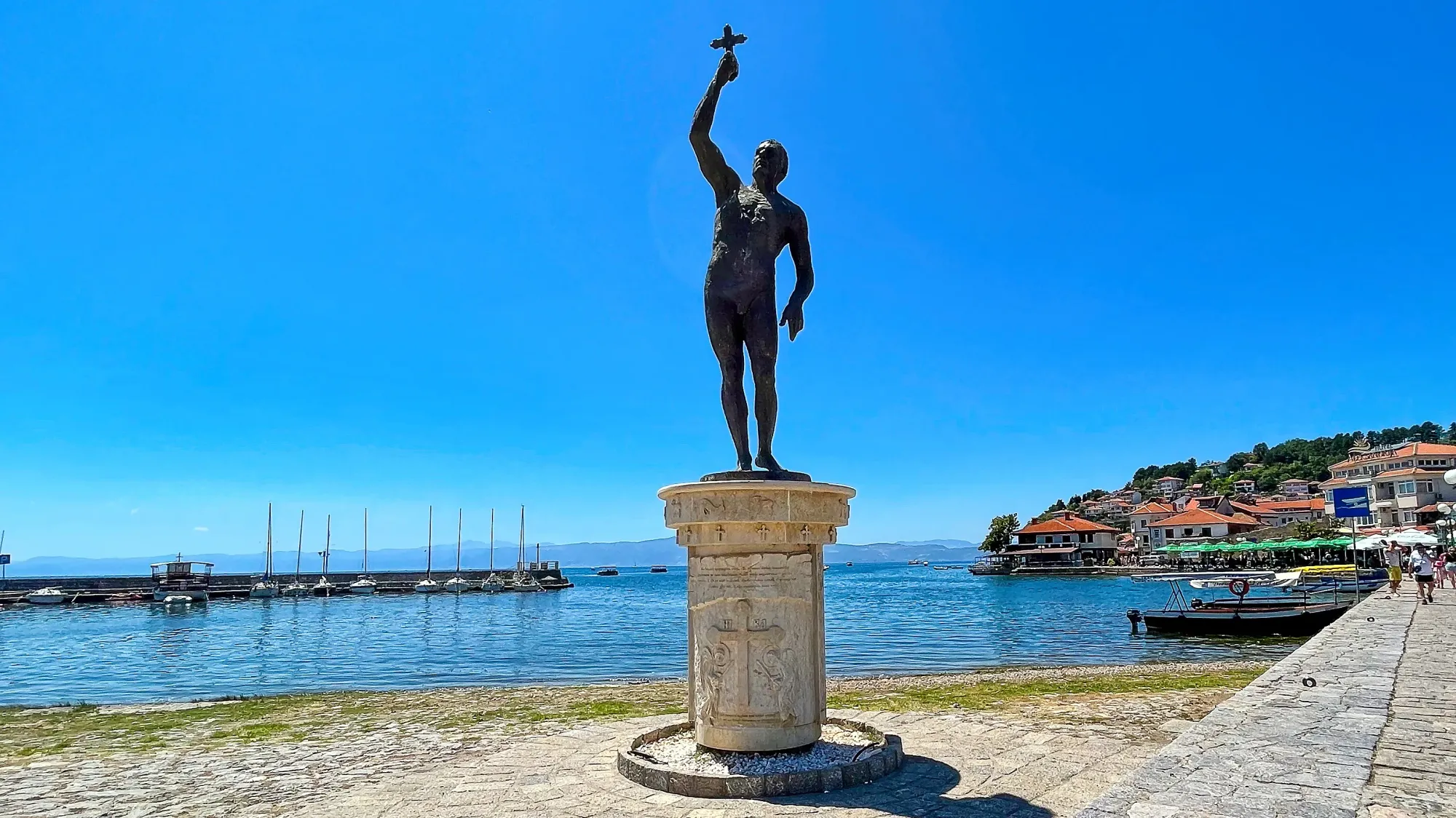
While North Macedonia's sheer existence aggravates its neighbors, it was an extremely peaceful place to visit. Lake Ohrid could belong on anyone’s list of top lake vacation destinations. We loved getting to take in the old and new, urban and rural parts of the country; but alas, it is time for us to go. Our bags are packed and we are headed next to the country that is home to the deepest canyon in Europe (Tara Canyon). The country we are headed to was actually once described by Lord Byron as “At the birth of the planet the most beautiful encounter between land and sea must have been on [this nation’s] coast.” If that is not a ringing endorsement, I do not know what is. Any guesses where we are off to next?
